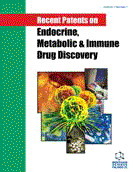Abstract
Telomere length is emerging as a biomarker for aging and survival is paternally inherited and associated with parental lifespan. Telomere-associated cellular senescence may contribute to certain age-related disorders, including an increase in cancer incidence, wrinkling and diminished skin elasticity, atherosclerosis, osteoporosis, weight loss, age-related cataract, glaucoma and others. Shorter telomere length in leukocytes was associated cross-sectionally with cardiovascular disorders and its risk factors, including pulse pressure and vascular aging, obesity, vascular dementia, diabetes, coronary artery disease, myocardial infarction (although not in all studies), cellular turnover and exposure to oxidative and inflammatory damage in chronic obstructive pulmonary disease. Effective regulation of abnormal therapeutic targets of an age-related disease requires the alteration of either the topological structure or dynamic characteristics of telomeres which are DNA-protein structures at the ends of eukaryotic chromosomes, the DNA of which comprise noncoding repeats of guanine-rich sequences. Telomeric DNA plays a fundamental role in protecting the cell from recombination and degradation, including those as the metabolic super-achievers in the body, organ systems in a given target network of a disease and aging. In order to manage and control the complex direct and indirect target hubs, in this paper, a review of the recent patents is made analyzing techniques, new approaches developed during the last years in adaptive pharmacology directed at slowing and preventing the loss of telomere length that may slow aging using pharmaceutical and nutritional module-based designs, such as with regard to the timing of administration of imidazole-containing dipeptides. We discuss our recent identification of the role of neuron-specific imidazole- containing dipeptide based compounds (L-carnosine, N-acetylcarnosine, carcinine) that regulate and therapeutically control telomere shortening, telomerase activity and cellular senescence. We support a therapeutic concept of using nonhydrolyzed forms of naturally occurring imidazole-dipeptide based compounds carnosine and carcinine, making it clinically possible that slowing down the rate of telomere shortening could slow down the human aging process in specific tissues where proliferative senescence is known to occur with the demonstrated evidence of telomere shortening appeared to be a hallmark of oxidative stress and disease. The preliminary longitudinal studies of elderly individuals suggest that longer telomeres are associated with better survival and an advanced oral pharmaconutrition provision with non-hydrolyzed carnosine (or carcinine and patented compositions thereof) is a useful therapeutic tool of a critical telomere length maintenance (allowing indirectly to manipulate with telomerase activity) that may fundamentally be applied in the therapeutic treatment of agerelated sight-threatening eye disorders, Diabetes mellitus, sarcopenia (that is the gradual loss of muscle mass) that can affect elderly people and subjects under the effect of exhausting exercises and physical load, prolong life expectancy, increase survival and chronological age of an organism in health control, smoking behavior, metabolic syndrome increasing the risk of developing cardio-vascular diseases, age-related neurodegenerative diseases, including Alzheimer's disease and cognitive impairment.
Keywords: N-Acetylcarnosine, age-related diseases, carcinine, cumulative oxidative stress, healthy aging, life expectancy, natural imidazole-containing peptidomimetics, non-hydrolized carnosine, pharmaconutrition provision, telomeres and telomerase biology, telomere length protection.
 51
51





















